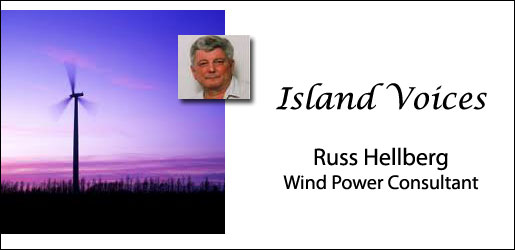Current Article ∙ Archive ∙ Back to Island Voices
May 2010:
The provincial Government recently released the report from the Green Energy Task Force. There were a number of action items from this report with one of them being the Clean Energy Act. The highlights of this act are covered below. this action will get renewable energy developments in BC moving.![hellberg-may10-a[1]](https://seniors101.ca/wp-content/uploads/2011/04/hellberg-may10-a1.jpg)
Clean and Renewable Electricity Development
The clean and renewable electricity and technology sector has contributed significantly to the development of British Columbia’s electricity system, and the Clean Energy Act creates new opportunities for investments, jobs and economic growth in every region of the province.
Since the late 1980s, the private sector has developed 63 independent power projects in B.C. that account for approximately 14 per cent of British Columbia’s domestic electricity requirements. These projects have contributed more than $1 billion to provincial GDP and created more than 11,000 person years of employment.1
This contribution will grow significantly as a result of the current and future clean power calls.
The Clean Energy Act includes the export of electricity as an objective, and will enable renewable power producers to work with BC Hydro to actively seek opportunities to sell clean, reliable electricity to Canada and the U.S. New calls for clean power will be issued when export opportunities are secured.
Clean Power Call
The Clean Energy Act creates certainty for the 2008 Clean Power Call to acquire up to 5,000 GWh of energy. So far, BC Hydro has announced the selection of 23 projects for representing 2,900 GWh/year of firm energy.
Bioenergy Call for Power
BC Hydro plans to acquire up to 1,000 GWh per year of cost-effective energy through Phase 2 of the Bioenergy Call for Power, which is expected to commence in May 2010.
Any form of biomass will be eligible, including wood waste sourced from new opportunities to access fibre enabled through the Clean Energy Act.
BC Hydro issued a Community-Based Biomass RFQ on April 7, 2010 for projects no larger than 5 MW that produce electricity from carbon-neutral biomass sources and create local or regional benefits such as improved reliability. Project submissions are due in September 2010.
1 Price Waterhouse Coopers. Economic Impact Analysis of Independent Power Pojects in British Columbia. December 2009.
BC Hydro has also implemented an Integrated Power Offer for pulp and paper companies eligible for Natural Resources Canada’s Pulp and Paper Green Transformation Program funding. The goal of the Integrated Power Offer is to optimize distributed generation, energy efficiency and demand response opportunities at customer sites.
Standing Offer Program
Following the 2007 Energy Plan, BC Hydro introduced a Standing Offer Program to take new supplies of private power as and when ready, and has so far signed six Electricity Purchase Agreements. The Clean Energy Act enables re-pricing to reflect the results of recent calls, includes the option to increase the maximum project size above 10 MW, and allows for technologies to be specified.
Feed-in Tariff
The Clean Energy Act enables the implementation of a Feed-In Tariff program to foster the development of emerging technologies in renewable power production. The program will focus on supporting emerging technologies that can supply power from B.C.’s diverse renewable resources. Government and BC Hydro will work with industry to define the program, which will be established through regulation.
Net Metering
Net metering allows customers who generate less than 50 kilowatts from technologies such as solar and wind get credit on their bills for the power they generate.
For a more detailed report on the Green Energy Task Force go to http://www.empr.gov.bc.ca/EAED/Documents/GreenEnergyAdvisoryTaskForce.pdf


